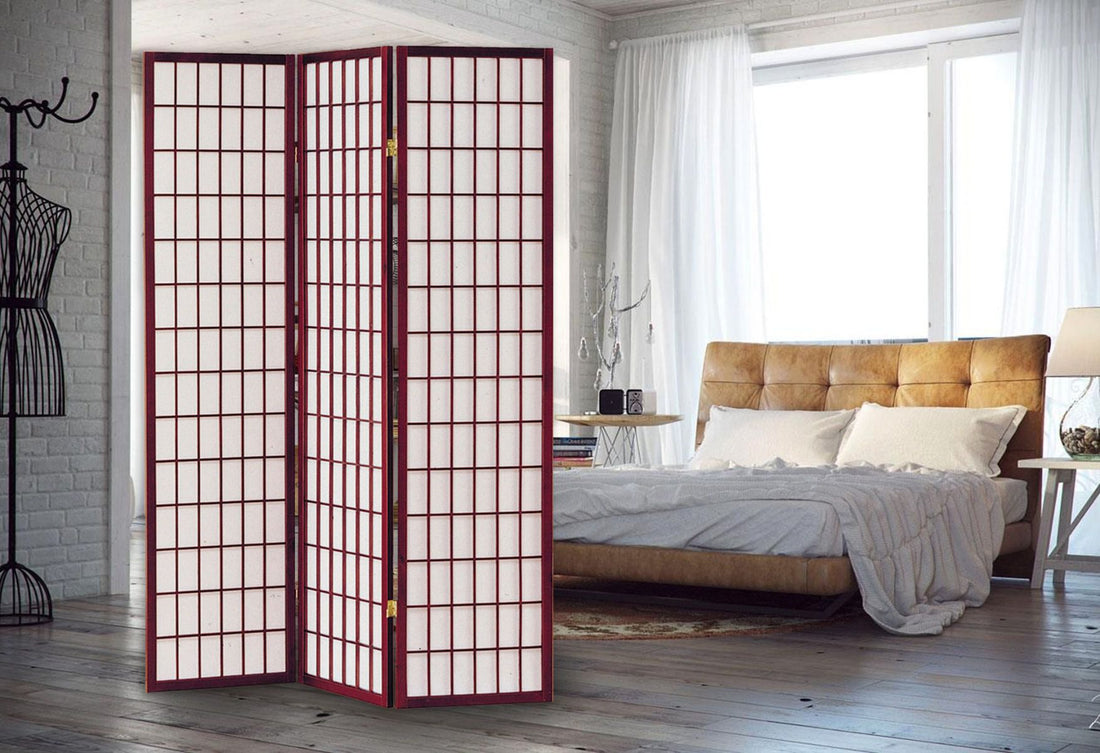Maybe it’s because I’ve been staring at the same four walls 24/7. Maybe it’s because I’m an extraordinarily festive individual. Or maybe the chaotic evil that is 2020 has unleashed my spooky soul earlier than expected. Whatever the case may be, I have spooked out my home to the max. Certainly an argument can be made for all three, however I never had an issue reigning in my festive decorating in years past. This year, redecorating is less a luxury and more a much needed, reinvigorating experience. But we’re not here to discuss my Halloween aesthetic. We’re here to talk about something that is both functional and decorative, ancient yet somehow exquisitely modern: the Shoji Screen.

Shoji Screens are a traditional Japanese architectural feature still present in homes, palaces, and temples today. Shoji Screens consist of thick, translucent paper that has been stretched over a wooden frame that is then held in place and strengthened with a lattice of wood or bamboo. Although presently they are found much more frequently in older, traditional homes, Shoji Screens endure and are making a design comeback during this era of organic minimalism. Of course, their functionality has expanded past their original design. Whereas once they were a tool to obstruct (that is what the word Shoji means) now they are a tool of artistic expression.
Before we press onward, might I present a brief history of the Japanese Shoji Screen. The first Japanese paper walls date back thousands of years, however they were not originally a Japanese invention. The practice was adopted from the Chinese. Chinese art depicting Screens dates their usage as far back as 200 BC. Over time the Japanese developed their own adaptation, one that was more lightweight and even portable. With that new development, the Shoji Screen began to appear in multiple areas of society including the theater and religious ceremonies, eventually making their way into the homes of common people during the Edo Period at which point the Shoji Screen was perfected. To this day, the Shoji Screen remains much the same, proving the enduring power of sleek, minimalist design.
Fast forward to present day and Shoji Screens are still extremely popular. The translucent paper allows them to function as curtains when placed near windows. Screens can serve as dividers when you need to break up a space. They can function as portable walls when you need a bit of privacy. They can also be displayed as works of art, especially when featuring stunning, painted images. Versatile and moveable, Shoji Screens, and the modern room dividers they’ve inspired, are an easy addition to any modern home. Whether your current decor is Japanese inspired, contemporary minimalist, or Boho eclectic, there is a Shoji Screen for you!
Traditional Screens
Wonderfully classic and beautifully chic, the Shoji Screen I and the Shoji Wood Screen are foldable and lightweight screens easily incorporated into any space. Their traditional design makes them great for homes with Japanese influences as well as minimalist homes that wish to stay away from the heavily ornate. The translucent paper gently filters light, thus breaking up space without cutting it off completely. This allows the energy and overall feeling of the space to maintain its flow while also heightening its functionality. These traditional Shoji Screens are also great for office settings, as they offer privacy without the claustrophobic stuffiness of a cubicle.


Artistic Shoji Screens
For those in need of something more colorful and artistically inclined, the Shoji Screen has been adopted as a sort of canvas for the expressive individual. There are many extraordinarily gorgeous screens with various scenes. Our Tall Cranes Shoji Screen features a beautiful scene with 5 elegant cranes on one side and a butterfly resting on some tall grass on the other. The Japanese Landscape Shoji Screen depicts exactly what its name implies: a snapshot of a Japanese Landscape with a tree and a variety of birds. The Dynasty Screen features a beautiful woman in traditional clothes admiring flowers as she arranges them in a vase. The Blooming Screen features stunning, hand-painted red poppies and a black frame that accentuates the flowers. The Flourishing Screen showcases a wonderfully delicate, hand-painted design of flowers and birds, perfect for the flora and fauna enthusiast.
As you sit looking around your room contemplating new decor or trying to think of ways to change up your space, consider a Shoji Screen! Imagine a decorative one behind your couch. Picture one in your studio separating your sleeping area and the kitchen/living area. Envision one in the corner of your room to be used as a privacy screen to change behind, like the fancy person you are. Visualize a foldable Shoji Screen in front of your window that can be collapsed to grant unobstructed views or opened back up to filter light whenever you wish. Re-energize while you reinvigorate your home. Let your space be transformed with the time-tested and everlasting Japanese Shoji Screen.

